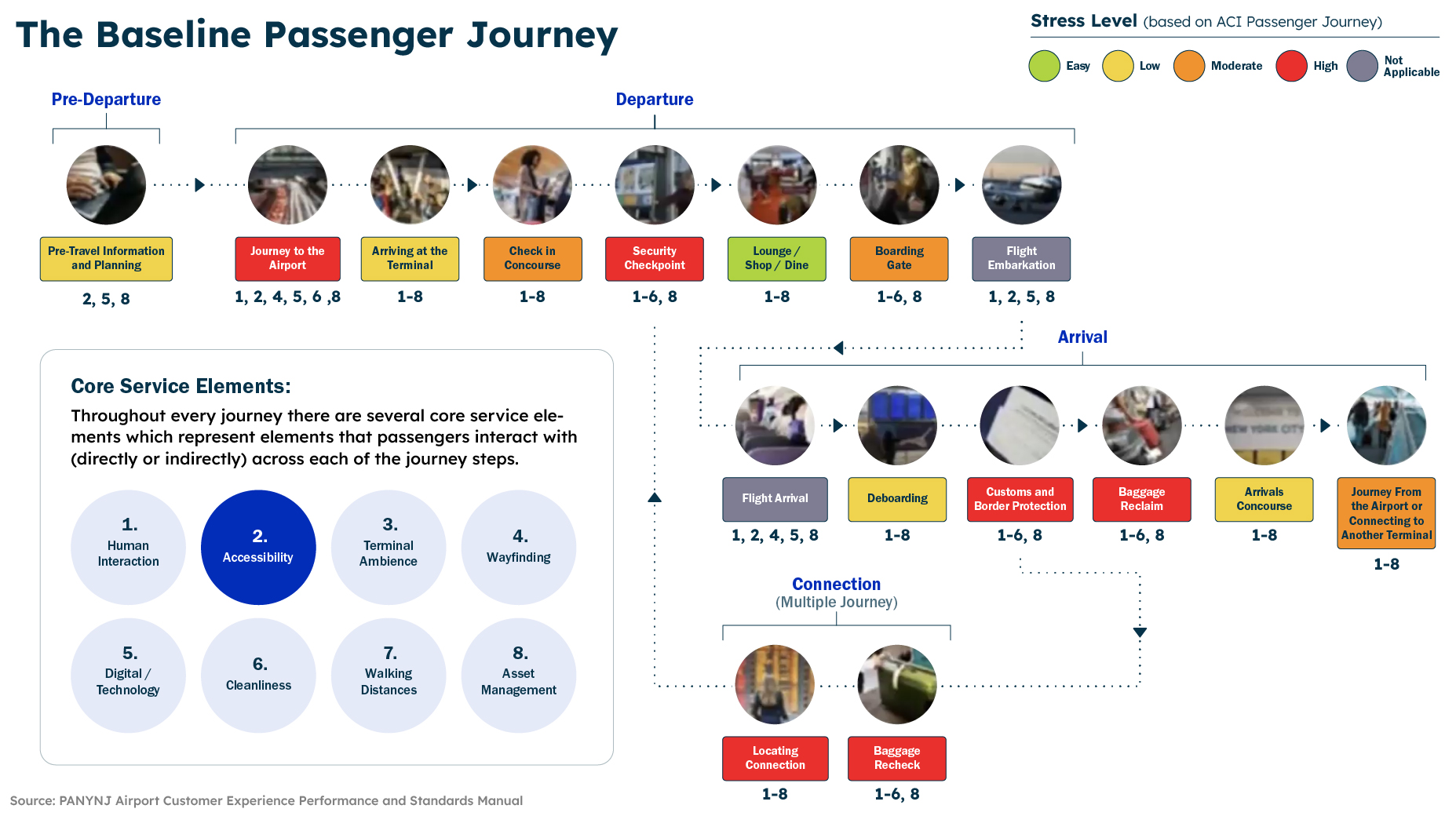Author Bio:
Will DeFeis is the Program Manager of Aviation Customer Experience and oversees the ADA and Title VI program for the Port Authority of New York and New Jersey’s (PANYNJ) airports, which include John F. Kennedy International Airport (JFK), Newark Liberty International Airport (EWR), LaGuardia Airport (LGA), and New York Stewart International Airport (SWF).
Advancing Digital Accessibility at Port Authority Airports
Accessibility has never been more important. With longer life expectancies, better medical care, advanced assistive technologies, tech innovations, and increased societal awareness, there’s a growing need for accessibility for people with disabilities and those with limited English proficiency (LEP).
Airports, and other transportation hubs, are essential public services that must be equitably accessible to all individuals. Accessibility is crucial for several reasons, primarily regulatory compliance with legal standards like the Americans with Disabilities Act (ADA) and the Air Carrier Access Act.
These regulations mandate that public services, including airports, provide accessible facilities and services for individuals with disabilities. Equally important are the moral and business cases. Morally, providing equitable access to experiences and services is simply the right thing to do. All people should have the opportunity to engage in public services without barriers to inclusion.
From a business perspective, accessible services allow all customers to spend money and access goods, thereby increasing the bottom line. When people feel they can equitably access experiences at the airport, it encourages them to utilize and spend at these facilities, boosting overall revenue. Traditionally, much attention is given to the accessibility of the built environment—such as buildings, parking, ground transportation, and terminal frontages.
However, in an increasingly online world, there is a significant need for digital accessibility. This necessity spans both people with disabilities and those with limited English proficiency (LEP). Resources like the Web Content Accessibility Guidelines (WCAG) provide comprehensive guidance for online accessibility. In April 2024, the ADA expanded to adopt the internationally recognized WCAG 2.1 standards within 2 to 3 years.


Accessibility and the Customer Experience
The Port Authority is dedicated to providing up-to-date, accurate information on airport accessibility and assistance in various formats. This information is readily available to all customers in advance, ensuring transparency and preparedness.
Customer Experience Journey Mapping
By identifying pain points and needs through journey mapping, the Port Authority can enhance experiences and address barriers effectively with our airport partners. Digital accessibility is intrinsically linked to this process, as travelers increasingly rely on tech devices to obtain information independently rather than interacting directly with airport staff. As reliance on online information grows, the accountability for digital accessibility becomes even more critical.
The Port Authority’s considerations of the customer journey are informed by several core service elements, with accessibility being a prominent focus. Each journey step incorporates accessibility considerations, ensuring a comprehensive approach. For example, the stress associated with security checkpoints is often times magnified for passengers with disabilities or LEP. Addressing these stressors and removing barriers is essential for a seamless experience.

Drilling Down on the Pre-Departure Phase
Focusing on the pre-departure phase, a significant portion of this customer journey step is impacted by website and online accessibility. Customers often plan their journeys meticulously to ensure timely arrival and a stress-free experience. This planning is particularly critical for individuals with disabilities, who need to ensure they have all the necessary accommodations to access the airport and board their flights smoothly.
In our digitized world, comprehensive and accessible online information is vital. Airport websites must provide detailed information about all available accessibility services, ensuring clarity and ease of access. At the Port Authority, we strive to make our websites clear, concise, and centered on accessibility. Assistive tools like Recite Me are embedded directly into our web pages, offering features such as screen readers, contrast toggles, font size customizations, and translation services. These tools make the website accessible to the greatest number of people, ensuring inclusivity and enhancing the customer experience.
Conclusion
Prioritizing accessibility aligns with ethical standards and supports better business outcomes. In the realm of accessibility and disability advocacy, it’s essential to remain dynamic, reflect customer needs, and adapt to improvements. Welcoming feedback is crucial for continuous enhancement, ensuring our websites remain accessible to all.
Ultimately, airports provide a crucial public service, connecting people globally and nationally. Equitable access ensures no one is left behind, allowing everyone to participate fully in travel experiences. The Port Authority airports are proud to lead this mission, fostering an inclusive and accessible travel environment for all passengers.
To learn more, watch our on-demand webinar: Supporting Disabled and International Visitors on Your Airport Website.

Free Accessibility Check of your Website
Get a free automated accessibility check of your websites homepage. This will identify and highlight any compliance issues on your website. Followed by recommendations on how to implement the necessary changes to make your website more accessible.



